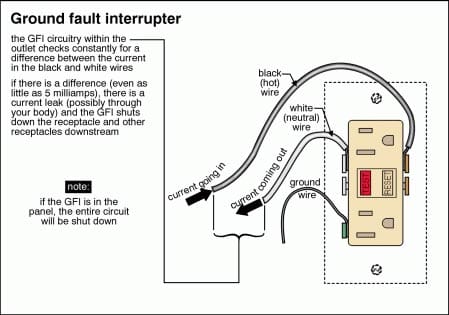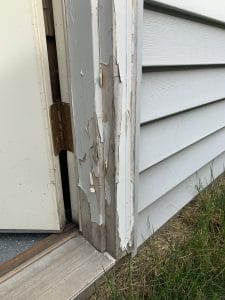Ungrounded 3 prong receptacles
By Cody Lewis, Pro-Tech Home Inspection Services
You’re buying an older home, and the inspector has flagged the receptacles for not being grounded. Chances are, at some point somebody has installed newer 3 prong receptacles on the existing branch circuit wiring, which did not include an equipment ground. Re-wiring an entire home is often impractical and can be very costly and intrusive, but the original 2 prong receptacles are not compatible with most modern appliances and devices. So, what’s a homeowner to do?
Most often, the answer is to simply install new receptacles without the ground and call it good. In fact, probably 70-80% of pre-1960s homes we inspect have at least a handful of ungrounded 3-prong receptacles. Ideally, 3-prong receptacles (or, more properly referred to as “grounding type receptacles”) are installed on 3 wires: A hot (referred to as an “ungrounded conductor”), a neutral (or “grounded conductor”) and an equipment ground. When no equipment ground exists, as is often the case in older homes, the hot and neutral are hooked up, sometimes the ground screw is connected to the neutral wire creating a “bootleg ground,” and the receptacle will provide electricity as if nothing is wrong. This practice may be common, but it is not safe nor legal in most cases. Let’s take a look at how this is addressed in the current revision of the National Electrical Code (NEC):
NEC 406.3 Receptacle Replacement
(D) Replacements. Replacement of receptacles shall comply with 406.3(D)(1), (D)(2), and (D)(3) as applicable.
(1) Grounding-Type Receptacles. Where a grounding means exists in the receptacle enclosure or an equipment grounding conductor is installed in accordance with 250.130(C), grounding-type receptacles shall be used and shall be connected to the equipment grounding conductor in accordance with 406.3(C) or 250.130(C).
(2) Ground-Fault Circuit Interrupters. Ground-fault circuit-interrupter protected receptacles shall be provided where replacements are made at receptacle outlets that are required to be so protected elsewhere in this Code.
(3) Non–Grounding-Type Receptacles. Where attachment to an equipment grounding conductor does not exist in the receptacle enclosure, the installation shall comply with (D)(3)(a), (D)(3)(b), or (D)(3)(c). (a) A non–grounding-type receptacle(s) shall be permitted to be replaced with another non–grounding-type receptacle(s). (b) A non–grounding-type receptacle(s) shall be permitted to be replaced with a ground-fault circuit interrupter type of receptacle(s). These receptacles shall be marked “No Equipment Ground.” An equipment grounding conductor shall not be connected from the ground-fault circuit interrupter-type receptacle to any outlet supplied from the ground-fault circuit-interrupter receptacle. (c) A non–grounding-type receptacle(s) shall be permitted to be replaced with a grounding-type receptacle(s) where supplied through a ground-fault circuit interrupter. Grounding-type receptacles supplied through the ground fault circuit interrupter shall be marked “GFCI Protected” and “No Equipment Ground.” An equipment grounding conductor shall not be connected between the grounding type receptacles.
406.3 (D) (3) refers directly to a simple and common solution: use GFCI protection to improve the safety of a grounding-type receptacle installed in the absence of an existing equipment ground. These receptacles must be clearly labeled with “GFCI Protected” and “No equipment ground.” To understand why this is an effective way to improve safety, let’s take a moment to discuss how a ground fault circuit interrupter works. We’ll start with this illustration, courtesy of Carson-Dunlop:

As you can see, the concept of a GFCI is fairly simple. It monitors the current between the hot and neutral wires, and trips immediately if any “missing” current is detected. The difference in current may indicate that the electricity in the circuit has found an alternative path to ground, a path that may include a human body along the way. This function does not rely on the equipment ground to work. From a safety perspective, a circuit with no equipment ground but GFCI protection is nearly as safe, or, depending who you ask, maybe even safer than a comparable circuit with an equipment ground but no GFCI. Hence, the code committee found this an acceptable way to balance practicality and safety. There is, however, one important caveat to discuss.
Limited Surge Protection
Surge protection relies upon an equipment ground to dissipate a voltage surge. Generally speaking, a surge protector plugged into a receptacle with no equipment ground is just acting as a power strip. If you have expensive electronics that you will be plugging in, be sure to discuss surge protection with an electrician to ensure your equipment is protected.
This article is intended to serve as a general guide only. We do not advise homeowners to undertake any work on their own electrical systems and always recommend consulting a licensed electrician. Remember: electricity kills!


